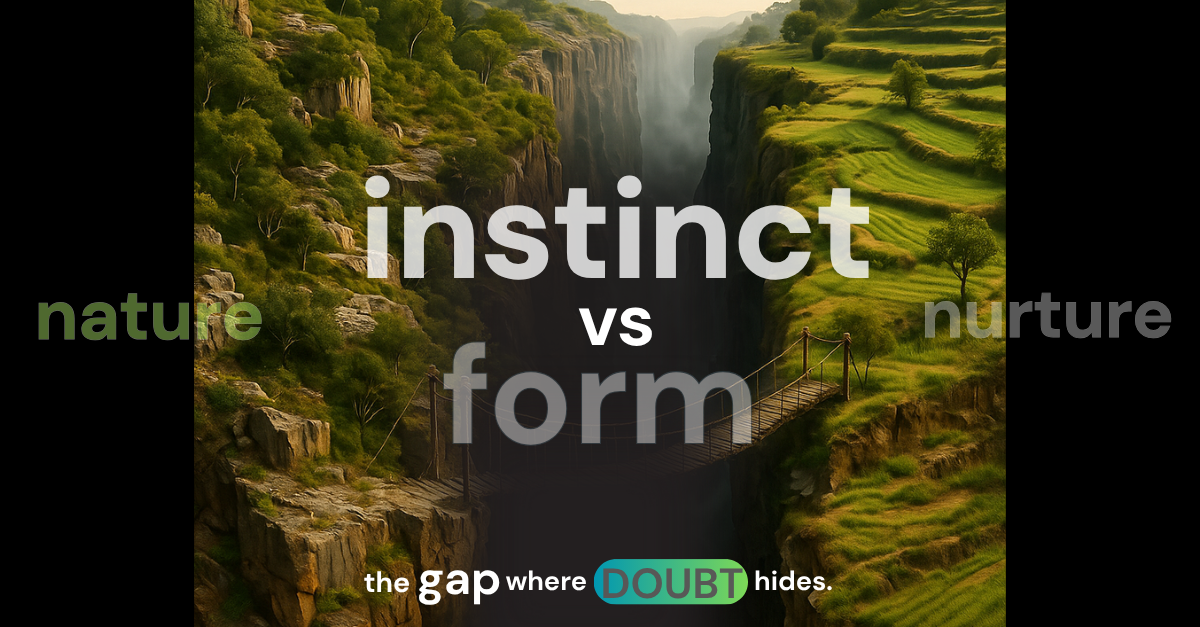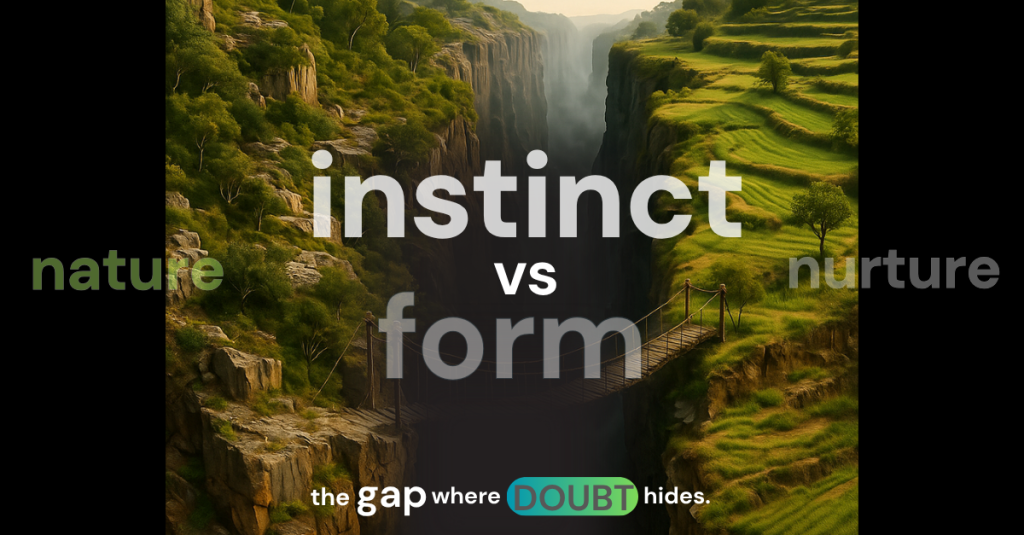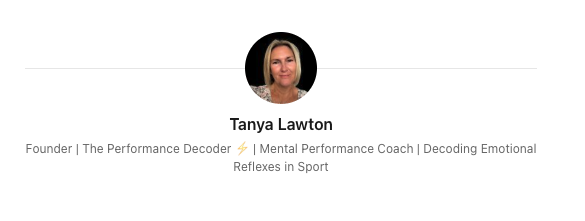
The Bridge Between Nature and Nurture: Where Performance is Truly Shaped


Every player is shaped by two forces:
- Nature gives the instinct — the raw emotional reflex that fires before thought.
- Nurture shapes the form — the training, the repetition, the environment that teaches discipline.
When instinct and form align, a player is empowered to express freely because instinct is underwritten by trust in the form. But when they misalign, a gap opens — and here is where doubt insidiously hides.
What Doubt Does
The enemy isn’t just doubt itself — it’s what doubt does.
- Doubt eats instinct — interrupting the signal before it becomes action.
- Doubt eats rhythm — replacing flow with second-guessing.
- Doubt eats trust — every choice replayed in the mind.
- Doubt eats courage — instead of stepping in, you wait. Instead of swinging free, you can’t pull the trigger.
It shows exactly where a player’s instinct is being interrupted by learned patterns, where second-guessing creeps in, and where hesitation destroys rhythm.
That’s the razor-thin line between good and great. Not talent. Not fitness. Not even strategy. Doubt.
The Language of Doubt
Doubt doesn’t always shout. Often, it hides in the word “should.”
- “Should I…?” — hesitation. Instinct asking permission.
- “I should…” — the prison of nurture, where form smothers freedom.
Every “should” is a moment where doubt has already won. Because instinct never asks, and freedom never needs permission.
How Doubt Hides in the Gap
Nature and nurture are not enemies — until they fall out of alignment.
- Nature drives expression.
- Nurture provides discipline.
But when nurture punishes instinct, or instinct resists form, the disconnect creates conflict. And conflict breeds doubt.
This is why one player feels free in training but heavy in matches. It’s why another thrives in rallies but freezes when it’s time to finish. And it’s why doubt isn’t random — it hides in the exact space where instinct and form have split apart.
Three Faces of Doubt
1. The Aggressive Baseliner
She has the shots. Big forehand, explosive instinct. But every time the score tightens, she waits half a beat too long. Instinct says go line. Nurture says “don’t miss.” The gap opens. Doubt slides in. She rolls the ball safe — and loses the moment. Doubt wins.
When the gap closes: she learns how to rebuild trust in her finishing shot. A reset routine frees her rhythm, a cue re-anchors her courage, and instinct is restored. Now she pulls the trigger when it matters most.
2. The Relentless Grinder
He thrives in long rallies. His nature is rhythm, repetition, persistence. But under pressure, the doubt isn’t about hitting — it’s about finishing. He gets the short ball and freezes. Instinct says attack. Nurture says “be safe.” The gap opens. He holds back. Doubt wins.
When the gap closes: he discovers doubt isn’t weakness — it’s a signal. By embedding courage into his finishing patterns, he builds a new instinct. The short ball is no longer a threat — it’s an invitation.
3. The Junior Talent
She’s been told since she was 10 that she’s special. She trusts her feel, her hands, her instinct. But as coaching grew stricter, every error was punished. Now, under pressure, instinct collides with correction. She second-guesses. She hesitates. The game feels heavy. The gap opens. Freedom disappears. Doubt wins.
When the gap closes: she sees that doubt isn’t random — it was nurtured in. With tools to restore rhythm and rebuild trust, instinct comes alive again. The player who looked paralysed by doubt reclaims her freedom to play.
Closing the Gap
Matches aren’t lost because players don’t know what to do. They’re lost in the half-second they stop trusting themselves to do it. That’s the gap. That’s where doubt wins.
When instinct and form align, doubt has nowhere to hide. And that — more than talent, fitness, or tactics — is the difference between good and great.
